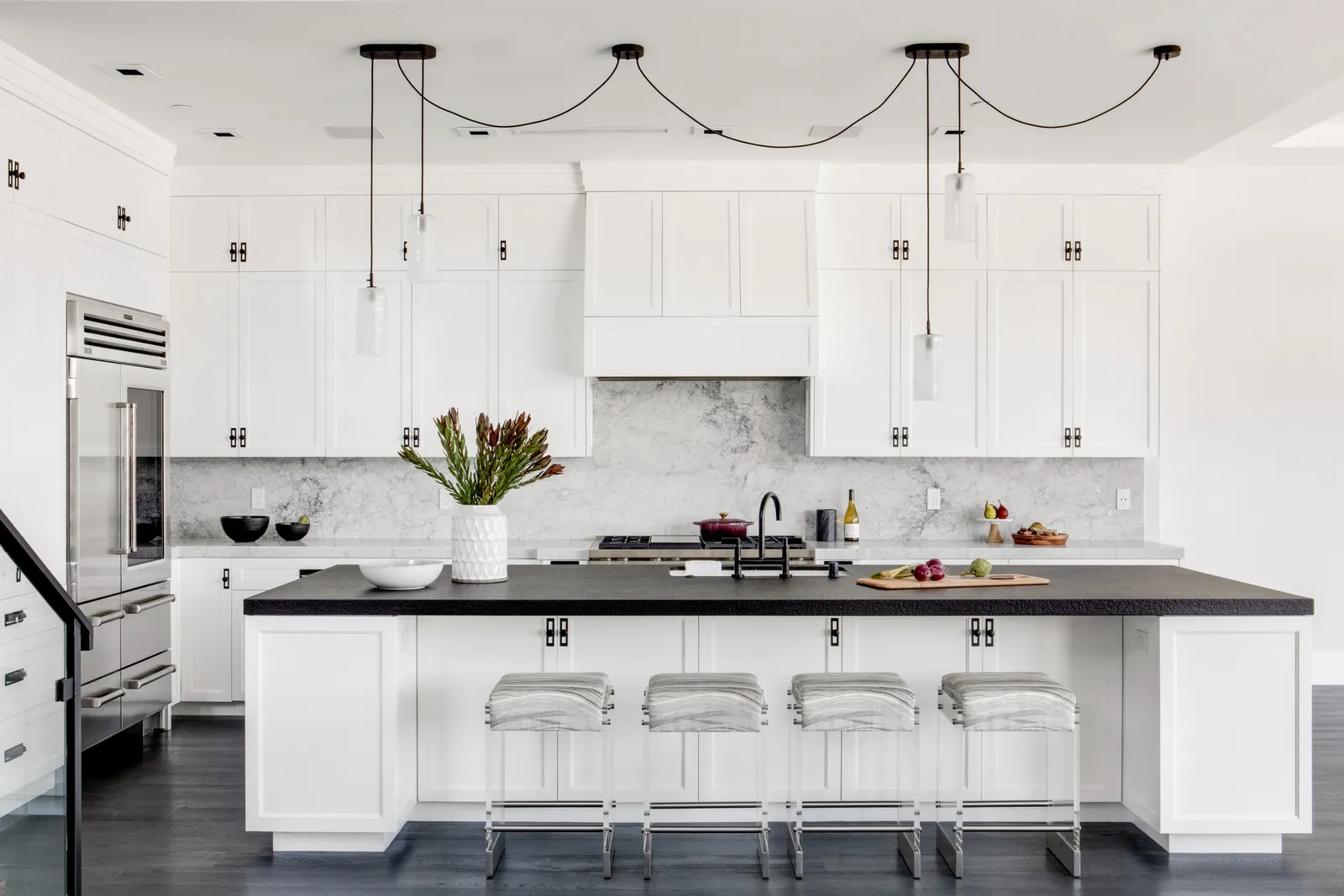A minimalist kitchen design is all about simplicity, functionality, and clean lines. This design philosophy focuses on stripping away excess elements, allowing the essential features of the space to shine. Whether you are redesigning your current kitchen or building a new one, minimalist kitchens prioritize efficiency and an uncluttered aesthetic. Below are some ideas and key features to help you create the perfect minimalist kitchen:
1. Neutral and Light Color Palette
A neutral color scheme is a hallmark of minimalist kitchen designs. Shades like white, light gray, beige, and natural wood tones create a calm, cohesive space that feels open and airy. These colors reflect light and make the space appear larger while promoting a clean, timeless look.
White: Fresh and brightens the space.
Light Gray: Offers a sophisticated and subtle contrast.
Beige and Taupe: Warm neutrals that add comfort and texture.
Natural Wood: Light woods such as oak or pine for warmth and texture.
2. Flat-Front Cabinets
In minimalist kitchens, cabinets often have flat-front designs with no visible hardware or intricate details. This helps to create a clean, streamlined look. Flat-front cabinets can be made from various materials, such as wood veneers, laminate, or metal finishes, offering a sleek and modern aesthetic.
Push-to-open mechanisms: This removes the need for handles, maintaining a smooth surface.
Integrated handles: Subtle built-in grooves that do not disrupt the seamless design.
3. Maximized Natural Light
Minimalist kitchens emphasize the use of natural light to create a bright and spacious environment. Large windows or glass doors help bring the outdoors in and make the space feel expansive. Keeping window treatments minimal or opting for sheer curtains allows for as much natural light as possible.
Large Windows: Allow natural light to flood the space.
Glass Doors: Create a seamless transition between the indoor kitchen and outdoor living area.
Open Window Treatments: Sheer or no curtains for uninterrupted light.
4. Clean, Simple Countertops
Countertops in a minimalist kitchen should be sleek and practical. Solid materials such as quartz, marble, or concrete work well in minimalist designs, as they provide clean surfaces without excessive texture or pattern. Choose materials that are easy to clean and durable.
Quartz: A durable, non-porous material with a smooth finish.
Marble: Elegant with subtle veining, ideal for a luxurious minimalist kitchen.
Concrete: Offers an industrial feel and a matte finish, perfect for modern minimalist kitchens.
5. Hidden and Integrated Appliances
To maintain a clean and cohesive look, many minimalist kitchens incorporate integrated or built-in appliances. These appliances are concealed behind cabinetry to blend seamlessly into the overall design. Built-in refrigerators, dishwashers, and ovens can all be hidden behind cabinet doors, contributing to a clutter-free space.
Hidden Fridge: Built into the cabinetry for a seamless design.
Built-in Dishwasher: Hidden behind cabinetry to maintain the minimalist aesthetic.
Induction Cooktops: Integrated into the countertop, offering a clean, sleek surface.
6. Open Shelving
While minimalist kitchens often use closed storage, open shelving can be used strategically to create a sense of openness. However, to maintain the minimalist aesthetic, it’s important to keep the shelves organized and clutter-free. Display only a few select, aesthetically pleasing items.
Floating Shelves: Simple, floating shelves in natural wood or metal can display select items like ceramics or glassware.
Organized Display: Keep items like pots, pans, and utensils neat and orderly on the shelves.
7. Smart Storage Solutions
Maximized storage is essential in minimalist kitchens to keep the space clutter-free. Use deep drawers, pull-out pantry shelves, and pull-out racks for utensils and spices. The goal is to hide away as much as possible, keeping only what’s necessary and aesthetically pleasing visible.
Pull-out Pantry: Slim pull-out storage for dry goods.
Deep Drawers: For pots, pans, and utensils that need to be stored out of sight.
Hidden Bins: Conceal trash and recycling bins within cabinetry for a tidy appearance.
8. Simple, Understated Lighting
Lighting is an important element in minimalist kitchens, as it enhances both functionality and ambiance. Choose simple, modern fixtures that complement the overall clean aesthetic. Recessed lighting, pendant lights, and under-cabinet lighting can be used to create a soft, ambient glow.
Pendant Lights: Simple, geometric pendants placed above kitchen islands or dining areas.
Recessed Lighting: Installed into the ceiling for subtle, even illumination.
Under-cabinet Lighting: Soft lighting that illuminates countertops without overwhelming the design.
9. Minimalist Backsplash
The backsplash in a minimalist kitchen should be subtle, seamless, and simple. Opt for materials like large-format tiles, glass panels, or a continuous countertop material for the backsplash. Avoid busy patterns or colors that detract from the sleek look of the kitchen.
Glass Panels: A smooth, reflective surface that complements the clean lines of the kitchen.
Subway Tiles: Simple white or gray tiles for a timeless and minimalist look.
Seamless Countertop: A countertop that extends to the wall for a continuous look.
10. Functional Furniture and Accessories
Furniture and accessories should be minimal, functional, and serve a purpose. Choose pieces that are simple and modern, with clean lines and neutral tones. The goal is to avoid excessive decoration and keep everything organized and clutter-free.
Minimalist Dining Table: A simple, rectangular table with clean lines and neutral finishes.
Chairs and Stools: Opt for low-profile, modern furniture that doesn’t overwhelm the space.
Decorative Accessories: Use a few carefully chosen pieces like a sleek fruit bowl, minimalist clock, or small potted plant for visual interest.
Conclusion
A minimalist kitchen design focuses on simplicity, functionality, and creating a sense of calm. By using neutral colors, clean lines, integrated appliances, and effective storage solutions, you can create a kitchen that is both aesthetically pleasing and highly practical. The key to minimalist design is eliminating clutter while making the space efficient, open, and welcoming. Whether you’re renovating an existing kitchen or designing a new one, these minimalist principles will help you create a timeless and efficient kitchen space.

